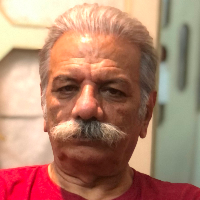Sound and Meaning in Shahnameh
Author(s):
Abstract:
There is a close relationship between sound and meaning such that the way phonemes are deployed and the conveyed meaning are intertwined. In choosing their words, language speakers are highly affected by their emotions and opt for words whose phonemes is expressive of the meaning they intend to convey. Besides their semantic function, phonological structures of words, through a combination of sounds, indirectly expresses the idea the poet intends to communicate. Morris Gramoon, the renowned French linguist, sheds light on the underlying layers of words and phonemes and the undeniable role they play in conveying meaning. The present study adopts and draws upon the theories proposed by him. Scrutinizing 300 lines of Shahnameh, falling into three semantic fields of epic, lyric, and elegy, the results of the present study revealed that there is a significant relationship between the expressed meaning and the deployed phonemes and syllables in Shahnameh. To put it differently, the results indicated that the language used in Shahnameh varies according to the conveyed meaning and Ferdowsi capitalizes on phonemes invoking secondary meanings in mind. In love poems, Ferdowsi heavily draws on fricitive (24%), trill (13.5%), glide (6.5%) consonants and open syllables (CV), (CV:). In epics; however, the most extensively used consonants and syllables are stop (38.7%) and (CVC), respectively. Finally, as for elegies, nasal (19.3%), stop-fricative (3.3%), and long syllables (CV:CC) are heavily drawn upon.
Keywords:
Language:
Persian
Published:
Boostan Adab, Volume:9 Issue: 1, 2017
Pages:
97 to 120
https://www.magiran.com/p1704674
سامانه نویسندگان
مقالات دیگری از این نویسنده (گان)
-
A comparative study of imagery in the broken poems of Qajar and Mahmoudsami Al-Baroudi
Nader Eftekharzadeh, Abdolhosein Farzad *, Farideh Mohseni Hanjani
Journal of Contemporary Literature, -
Reflecting the socio-political conditions of Tunisian and Iranian Muslims in the poems of Abolqasem al-Shabi and Mirzadeh Eshghi and explaining its geopolitical dimensions.
Mohammadehsan Rahmani, Zahra Khosravi *,
Quarterly of Geography (Regional Planing),



